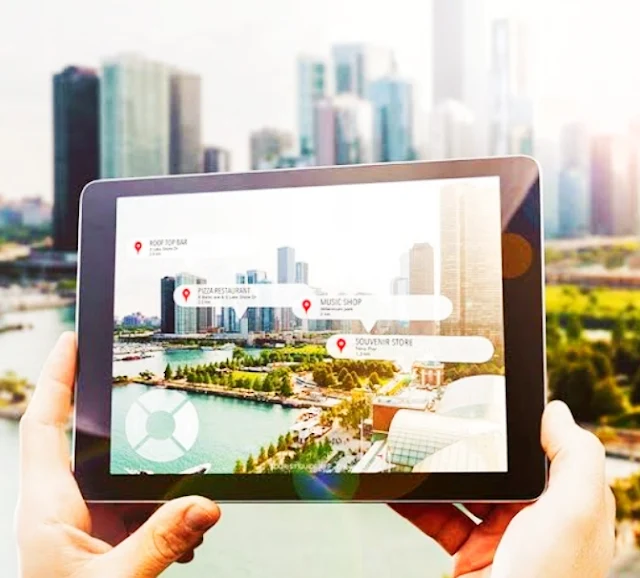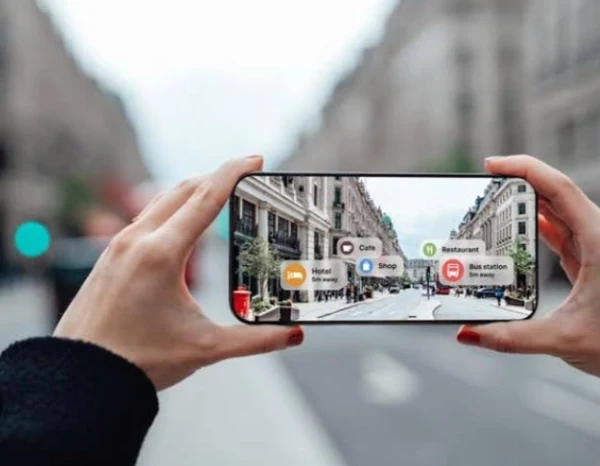Real-World Projects Using AR for Everyday Applications
AR for Everyday Applications
Augmented reality (AR) is transforming how we interact with the physical world by seamlessly blending digital information with our surroundings. This technology overlays virtual elements like images, sounds, and text onto our real-world environment, creating a more immersive and interactive experience. AR is rapidly moving beyond just gaming and entertainment, finding practical applications in various aspects of our daily lives.
Table: Examples of AR in Everyday Applications
| Industry | Application | Description |
|---|---|---|
| Shopping | Virtual Try-On | Customers can virtually try on clothes, furniture, or makeup using their smartphones or tablets before purchasing, reducing the likelihood of returns. |
| Education | Interactive Learning | AR apps can bring textbooks and lessons to life with 3D models, simulations, and visualizations, making learning more engaging and effective. |
| Navigation | AR Maps and Wayfinding | AR overlays on mobile devices can provide turn-by-turn directions, highlight points of interest, and display information about nearby locations. |
| Maintenance and Repair | AR Manuals and Troubleshooting | Technicians can access step-by-step instructions, schematics, and highlighted components overlaid on equipment, improving repair efficiency and accuracy. |
| Interior Design | Virtual Furniture Placement | Homeowners can visualize how furniture and décor will look in their space before buying, allowing for better planning and informed decisions. |
| Fitness | AR Workouts and Training | AR apps can provide interactive workout routines with virtual trainers, personalized guidance, and real-time feedback. |
| Entertainment | AR Games and Experiences | AR games can transform our surroundings into interactive landscapes, while AR experiences can overlay digital elements onto real-world locations for immersive storytelling. |
These are just a few examples, and the potential applications of AR in our daily lives continue to grow. As AR technology advances and becomes more accessible, we can expect to see even more innovative ways it is integrated into our everyday routines.
Real-World Projects Using AR for Everyday Applications
Augmented reality (AR) is no longer just science fiction. Several innovative projects are leveraging AR technology to enhance various aspects of our daily lives.
Here are a few examples, along with a breakdown of their features:
1. IKEA Place (AR Furniture Placement):
- Project Name: IKEA Place
- Target Users: Furniture shoppers, interior decorators
- Technology: Smartphone AR App (iOS and Android)
- Description: This popular app from IKEA allows users to virtually place furniture pieces in their actual living space before purchasing them. Users browse the IKEA app, select furniture, scan their floor with their smartphone camera, and see a 3D model of the furniture appear at scale in their space.
- Benefits: Reduced impulse purchases, improved space planning, increased buying confidence.
- Table: Refer to previous table for IKEA Place features.
2. Lowe's Fix It Virtual Assistant (AR DIY Help):
- Project Name: Lowe's Fix It Virtual Assistant
- Target Users: DIY enthusiasts, homeowners tackling repairs
- Technology: Smartphone AR App (iOS and Android)
- Description: Developed by home improvement giant Lowe's, this app provides step-by-step AR instructions for various DIY projects. Users scan project barcodes or search for projects within the app. The app then overlays 3D animations, highlighted components, and video tutorials onto the user's phone screen, guiding them through the repair process.
- Benefits: Clearer instructions compared to traditional manuals, reduced repair errors, increased confidence for DIY projects.
- Table:
| Feature | Description |
|---|---|
| Project Search & Barcode Scanning | Access instructions for various DIY tasks. |
| 3D Animated Overlays | Visual guides for each step of the project. |
| Highlighted Components | Identifies specific parts needed for each step. |
| Integrated Video Tutorials | Offers supplemental video explanations. |
3. Amazon AR View (Virtual Product Try-On):
- Project Name: Amazon AR View
- Target Users: Online shoppers
- Technology: Smartphone AR App (iOS)
- Description: This innovative feature from Amazon allows customers to virtually try on various products before purchasing them. Users select a product with AR View enabled, point their phone's camera at a flat surface, and see a realistic 3D model of the product appear at scale. For clothes and shoes, users can even virtually "try on" the items, allowing them to assess fit and style before buying.
- Benefits: Reduced returns due to poor fit, improved online shopping experience, increased customer confidence.
- Table:
| Feature | Description |
|---|---|
| Product Selection with AR View | Browse products compatible with AR View. |
| 3D Product Overlays | Realistic product models appear at scale. |
| Virtual Try-On (Clothing & Shoes) | Users can virtually "wear" select items. |
| Size and Color Options | Users can experiment with different product variations. |
These are just a few examples, and the possibilities for AR applications in everyday life are vast. We can expect to see even more innovative projects emerge in the future, potentially including:
- AR Educational Apps: Interactive 3D models and visualizations can bring textbooks and lessons to life, enhancing learning experiences.
- AR Navigation Tools: AR overlays on maps can provide turn-by-turn directions with real-time traffic updates and points of interest highlights.
- AR Fitness Coaching Apps: Virtual trainers can provide personalized workout routines with interactive feedback and exercise guidance.
As AR technology continues to evolve and become more accessible, the potential to transform how we interact with the world around us is truly exciting.
Frequently Asked Questions for AR for Everyday Applications
Augmented reality (AR) is increasingly becoming a part of our daily lives, with applications ranging from gaming and entertainment to education and retail. Here are some common questions and answers about AR for everyday use:
General Questions
- What is augmented reality?
- AR is a technology that overlays digital information onto the real world, enhancing our perception and interaction
with our surroundings.
- AR is a technology that overlays digital information onto the real world, enhancing our perception and interaction
- How does AR work?
- AR typically uses cameras and sensors on devices like smartphones or headsets to track the user's environment. It then displays digital content, such as images, videos, or 3D models, aligned with the real-world scene.
- What are some common examples of AR applications?
- AR is used in various fields, including:
- Gaming: Games like Pokémon Go and Harry Potter: Wizards Unite
- Retail: Virtual try-on apps for clothing and makeup
- Education: Interactive learning experiences and field trips
- Navigation: Real-time directions overlaid on the real world
- Healthcare: Medical training and surgical assistance
- AR is used in various fields, including:
Technical Questions
- What devices are needed for AR?
- AR can be experienced on a variety of devices, including smartphones, tablets, and dedicated AR headsets like Microsoft HoloLens or Apple Vision Pro.
- How accurate is AR technology?
- AR technology has improved significantly in recent years, but accuracy can still be affected by factors like lighting, device capabilities, and tracking challenges.
- What are the privacy and security concerns with AR?
- AR applications may collect data about users' environments and behaviors. It's important to choose reputable developers and be aware of privacy policies.
Benefits and Challenges
- What are the benefits of AR for everyday life?
- AR can enhance learning, improve shopping experiences, provide real-time information, and create more engaging and interactive content.
- What are the challenges of AR adoption?
- Challenges include the cost of AR devices, technical limitations, and concerns about privacy and security.










